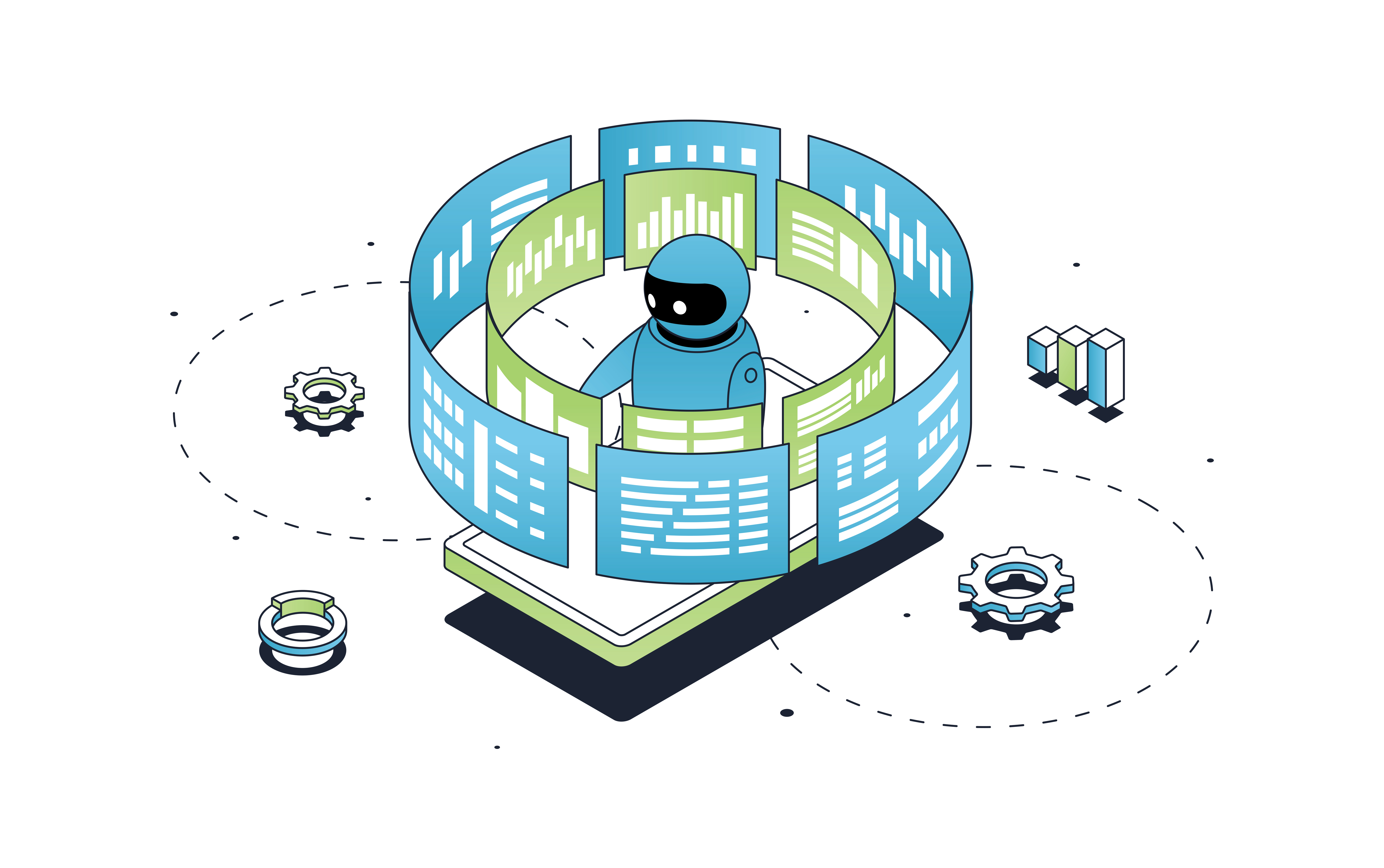Towards the AI Era in Museums
Dnyanesh Kamat

Analyses of the growing use of generative artificial intelligence (AI) across various industries have swung from wild optimism to fears of rampant job losses and the eventual destruction of the planet. Some have said AI, alongside climate change, the rise of unregulated generative AI is the next biggest threat to human civilization. Even the leaders of the ChatGPT developer OpenAI, a leading AI firm, have themselves called for more government regulation of the industry (though the cynical take on this is that having had an early start in AI, these tech firms now want the government to set up high barriers to entry for newer firms). Two points need to be made about generative AI. First, we are probably at a stage of generative AI where the internet was at its dial-up stage in the late 1990s. Second, both points of view about AI seem to hold merit – that unregulated AI is harmful, while “AI for good” can lead to many benefits to society. Given this, it is probably a good idea for Canadian museums to eschew “ostriching” while other sectors embrace AI wholeheartedly. To be sure, some museums across the world have already begun deploying AI across various parts of their operations. Let’s look at the positives – how can museums harness generative AI?
Museums can deploy AI to enhance curation and their visitor experience. Dr. Naimul Khan of Toronto Metropolitan University states, “AI has been primarily utilized to enhance the museum experience in the last few years. With the Canada Science and Technology Museum, my research lab created mobile apps that can automatically recognize a particular object on display when the phone is pointed towards it, and overlay relevant information on the screen.” Though integrating AI in museum visitor experience may be an interesting initiative, it raises obvious ethical questions around privacy, consent, as well as the ability of AI to accurately capture information like gender, age, race, and the full range of emotions displayed by visitors. Human beings are complex – can AI truly penetrate our minds, and if so, to what end? Moreover, can AI replace experienced museum curators, whose curation is laden with the things that AI can never replace – lived experience and emotion.

Alternative would be to use as a type of virtual assistant or co-pilot. The Smithsonian Museum, for example, uses Pepper, a humanoid robot, to personalize visitors’ experience by asking them questions and providing customized information about exhibits. Tate has partnered with Microsoft to create Recognition, a game that matches artwork with photojournalism images. Google’s Arts & Culture app uses facial recognition to match users’ selfies with artworks, creating a unique and engaging visitor experience.
When it comes to the task of running a museum, AI can play a role in mitigating one of the most critical pain points for many Canadian museums – capacity and funding constraints. “With the advent of generative AI,” Dr. Khan suggests, “there is an opportunity to do life-like virtual re-creation of heritage spaces. An aspect that Canadian museums and galleries can integrate is the creation of more immersive visual experiences utilizing AI and virtual reality.”
Museums can also harness generative AI’s prowess in predictive analysis and use it to deploy resources more optimally during peak season. If used ethically, AI can help museums curate exhibitions and refine visitor experiences to make them more relevant to Canada’s diverse communities. AI can be deployed in preservation and restoration, where AI algorithms can predict object deterioration, which can reduce if not avoid last-minute restoration costs. Museums can also use AI to enhance their climate sustainability by optimizing utility costs. Lastly, AI can hoover up vast amounts of donor data to create customized fundraising strategies. Connected to this is the fact that AI can be a force for good – museums can harness AI to have more clarity and control over the sources of their funding.
Small museums in particular often face capacity challenges when trying to deploy staff on strategic initiatives. AI can automate routine tasks, allowing staff to focus on improving exhibits and programming. Museums can also use AI as a guide when filling out government-related paperwork. The American Alliance of Museums (AAM), for example, has discussed the potential of using AI in museum accreditation. Using AI routinely would not only free up staff time, but it would also ensure higher accuracy and consistency in data submissions, leading to enhancements in qualitative credibility.

Museums will need to make themselves part of society-wide conversations about ethics in AI. Dr. Khan highlights a few aspects that museums should be aware of when using AI: “Copyright tools such as Midjourney and Stable Diffusion are known to utilize copyrighted materials for training their AI models.” On social bias, “AI tools have many inherent social and cultural biases, especially when utilizing AI for heritage spaces, it is important to critically evaluate and fine-tune the AI generated images and videos.”
In the UK, a government-funded year-long research project initiated these conversations, leading to the creation of an AI Museum Planning Toolkit. First, ethics guidelines for museums will need to be dynamic enough to keep pace with the rapid pace of innovation in AI. When museums collect visitor data to optimize their operations and enhance visitor experience, they will have to seek informed consent, ensure strict data privacy, and anonymize data to the extent possible. This also means museums will have to be transparent about how they use AI and reduce the opacity of algorithms. Museums will need to stress-test their AI systems to ensure biases are not lurking within algorithms and training data. They will also have to devise a way to ensure that the benefits of AI adoption accrue to everyone, i.e., accessibility standards will have to be baked into museums’ AI adoption strategies. Lastly, museums must ensure that AI training be made available to all museum staff so that AI adoption does not lead to doomsday scenarios of mass layoffs and the creation of a tech elite within the sector.

Museums cannot do this by themselves. Programmatic, financial, and regulatory frameworks need to be created by industry bodies as well as by the government. UNESCO’s first-ever global standard on AI ethics, launched in 2021, is a useful starting point. The Canadian Museums Association is currently in the process of launching a multi-year strategy to update its ethics guidelines, which will include an AI component. However, government support is also critical if museums are to safely and ethically use AI. The government of Canada is an early mover in this regard, having launched the pan-Canadian Artificial Intelligence Strategy in 2017, which aims to foster commercialization of AI, enhance research and development, and set standards for the use of AI. That strategy, along with the National Museums Policy, currently under development at the Department of Canadian Heritage, need to provide a regulatory framework that sets minimum standards for the use of AI by museums. Museums will also need AI-specific grants separate from regular program grants to make them AI ready. Lastly, the government will need to take the lead in developing platforms where museums and heritage institutions can learn about AI best practices not just within Canada, but from their peers globally.
As we navigate towards an increasingly digitized future, the influence of AI in museums will persistently expand and transform. By leveraging the capabilities of AI and upholding a steadfast commitment to ethical considerations, museums can equip themselves for the future while still safeguarding the past. The ability of museums to implement AI ethically within their institutions, and whether they will be backed by government and industry bodies, will significantly determine the success of their innovation journey.
Dnyanesh Kamat, Senior Manager – Advocacy at CMA, is a strategy and policy expert in creative and cultural industries (CCI). He has worked in both government and the private sector, focusing on CCI growth, economic diversification, and innovation.
